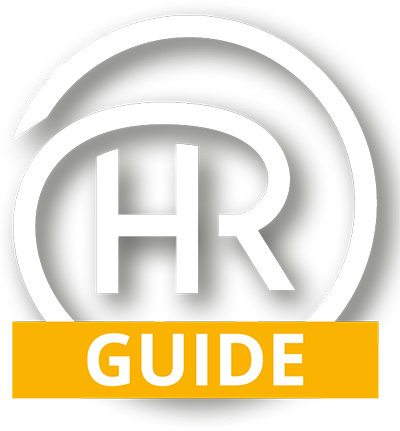Home and Hybrid Working – A Step by Step Guide
Written by Andrew Johnson, Founder and CEO HRGuide - Fri 11th Oct 2024
Introduction
Hybrid Working is a type of flexible working where an employee splits their time between:
- the workplace
- remote working
Working from home is the most common way of working remotely. An employee might work from home all the time, or as part of a hybrid working arrangement.
How to structure a policy for home and hybrid working
In order to be consistent and fair with employees it is best practice to create a policy that explains how working from home or hybrid working is addressed in your organisation. Outline how things work and set limits but allow for some flexibility. Detailed below are the constituent elements of a Home and Hybrid Working Policy.
Policy introduction - The first section of your policy should explain the basics.
1. Opening statement - Set out your commitment to flexible working, with the aim of meeting the needs of both the organisation and your employees. Explain that other types of flexible working (such as amended hours) are not automatically part of an agreement on working from home or hybrid working. Say who the policy has been agreed with – for example, in consultation with a trade union or group of employee representatives.
2. Review - Your policy should be regularly reviewed. Explain the review process:
- when or how often it will happen
- who will be involved
- what it will consider
- what the outcomes might be
- how it will be communicated
3. Definitions - Define the words or expressions you will be using. Explain what they mean for your organisation. For example, define:
- working from home, or homeworking
- hybrid working
Explain what types of working from home or hybrid working are available in your organisation. For example:
- home as the main place of work
- splitting work between home and the office
- a base at home to travel to customers or different premises
- the office as the main place of work, with occasional working from home
- working in a co-working space
4. Set out:
- where an employee can work
- where they might need to attend – how frequently, for how long, and for what reasons
- Explain that these are limits that you will generally follow, but you will consider requests outside of these limits depending on an employee's circumstances.
5. Requests
Explain how employees can request to work from home or change where they work. Ask them to apply in writing and to explain why they are making the request – for example, if they are a disabled person asking for a reasonable adjustment. If you want them to submit a formal flexible working request, refer to your flexible working policy. Download our Flexible Working Policy when you subscribe to www.hrguide.co.uk
6. How decisions will be made - You should explain how you will assess things and how you will respond to requests.
7. Suitability of the role - Explain how you will assess:
- whether the role is suitable for working from home or hybrid working
- when, where and how work can be done
8. Eligibility - Explain which employees are eligible. Be careful that you do not directly or indirectly discriminate.
Examples of eligible employees could include those who:
- request it as a reasonable adjustment
- make a formal flexible working request
- work for you for a minimum amount of time
- complete their training
- pass their performance review
9. Working environment - You should assess whether the home (or other location) is suitable for work. Explain the requirements, for example:
- health and safety
- security and privacy
- a suitable internet connection
Explain how the assessment will be done, for example: who will do it, how it will be done and if or when access will be needed
10. Decision making and communication - Set out a transparent and fair process:
- who will make the decision
- what steps they will follow
- how to appeal (if you have an appeals process)
- State how you will communicate the decision and any next steps.
11. Other important practicalities - Explain things that are specific to working from home or hybrid working and refer to other policies where appropriate.
11a. Health and safety risk assessments - You should carry out a risk assessment before approving any request for working from home or hybrid working. Explain:
- how this will be done
- what will happen if it identifies concerns – including who will make and pay for changes, and how quickly those changes will need to be made
- what will happen if concerns are not addressed – reserve the right to refuse the request
- Set-up, costs and expenses
11b. Explain the process for setting up working from home or hybrid working:
- what will you provide – for example, furniture, phone, broadband, printer, fire extinguisher, paper
- what do you expect the employee to provide – for example, heating and lighting
- who will pay for any installation and other necessary costs – and, if required and agreed, how to claim for these costs
State whether you will contribute towards costs – for example, heating and lighting or any other expenses. If you will, explain:
- how much
- what can be claimed and how
- what is taxable
Explain, for any necessary equipment:
- who it belongs to
- who is responsible for maintaining or moving it – and how this will be done
- whether it can or cannot be used for personal use
12. Tax, Mortgage, Lease and Insurance
Explain how working from home might affect your employees' tax. They might be able to claim tax relief for working from home. Find out more about claiming tax relief on GOV.UK. Explain what your employer's insurance covers – it should cover work property and a claim by a third party.
Ask the employee to:
- tell their mortgage provider or landlord, and home insurer, that they intend to work from home
- check there isn't anything in their mortgage agreement, lease or home insurance that prevents them from working from home
- check with their home insurer that they are covered if work equipment causes damage, and for a claim from a third party – as their employer, you should say you will pay the extra cost if they have to pay more for this
13. Employer access - Explain how frequently and in what circumstances you might require access to the home. For example:
- initial set-up
- maintenance of equipment
- health and safety risk assessment
- electrical equipment testing
14. Moving home - Explain what will happen if someone who is working from home wants to move.
15. Performance management - Explain how employees who work from home will be managed consistently with office staff, and given the same opportunities for training, development and promotion.
16. Refer to relevant policies, for example:
- communication
- health and safety
- monitoring and performance
- sickness and absence
- team working
- training, development and support
- Make sure that employees are clear about their hours and the core hours when they should be at work.
17. Security - Explain how staff working from home should store and transmit documents and information.
Get expert advice on (insert subject) from HRGuide
Creating a clear Home and Hybrid Working Policy ensures you are consistent and fair with employees. A clear policy explains how working from home or hybrid working is addressed in your organisation. Download our more detailed step by step HR How to Guide for more detail on Home and Hybrid Working by subscribing to https://www.hrguide.co.uk/subscribe.php
If our step-by-step HR How to Guide doesn’t give you the support you need, simply call us on our HR Helpline for expert advice.

